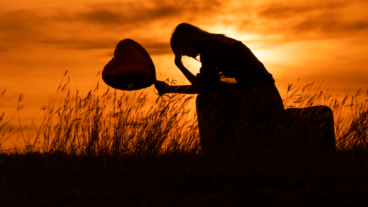It's Time to Meet Your Emotions!

Emotions are a part of our day to day life, of our routines. And yet, they go by unnoticed by most of us, and more often than not we don’t stop to listen to what they are telling us.
Emotions are like warning signs from our body. When they appear, they’re trying to show us something. Why not look further into them? Are we afraid? In today’s article, we’re going to introduce you to your basic emotions…
“The emotions predispose us in different ways to action; each one of them points to a direction that, in the past, allowed us to properly solve the many challenges that human existence has undergone.“
-Daniel Goleman-
Joy
Joy is the positive feeling that emerges when we achieve a goal or objective. When we live through an experience we find pleasant or that reduces our discomfort. Joy is considered a positive emotion.
Under its influence, we are capable of bringing up happy memories. It works as a engine that stirs up our life. And it makes us choose those moments during which we experienced this positive emotion.
It leads to hormonal changes that reduce stress, improve the autoimmune and cardiovascular responses. It makes social interaction easier. Joy makes us more communicative people, more likely to help others. And it eases the effects of negative emotions.
Joy is contagious. When we feel happy, we tend to share it with others and with the world in an attempt to make everything that surrounds us feel it too.
Sadness
Without sadness, we wouldn’t be able to feel joy.
Sadness is a negative emotion that’s characterized by the decay of our mood and the reduction of our mental activity and actions.
Being sad is very subjective and personal. Sadness appears when one is faced with situations in which we lose something or someone. Or at times in which our “me” is damaged. It can range from a mild melancholy to intense grief. But, we can’t confuse it with depression.
It influences our thought processes, lowering our creative capacity. We focus on the available data, focusing on negative things that have happened. And we don’t explore other options to resolve the conflict or get out of the negative situation.
Feeling sad makes us reluctant to engage in social contact. This emotion makes us isolate ourselves or, on the contrary, makes us look for help. When we feel continuously sad, we may experience a learned helplessness that makes us think that no matter what we do, we won’t be able to change things. And this makes us not want to even attempt it. But sadness also has its positive side. It makes you reflect on what’s really important to you.
Anger
Anger appears when we’re subjected to situations we find frustrating or harmful to our integrity and that of people we care for. Anger shows us there’s a threat before which we must defend ourselves.
It moves us to action, while simultaneously blinding our rationality. It interrupts our complex thought processes and makes us express negative affection towards the focus point of our frustration, be it a person or a situation.
Anger will appear if we think we’re able to act upon the factors that block our goals. On the contrary, if we consider that there’s nothing we can do, sadness is the emotion we’ll feel. We also feel anger when we sense that the rules and rights we believe in have been transgressed: injustice.
There are many ways to channel this emotion. And it may appear when we don’t receive any compensation for our work and actions. Example, if our boss doesn’t pay us or if our efforts aren’t recognized.
Don’t give in too much to anger. Prolonged anger breeds hate.
Fear
Fear is a feeling produced by an imminent danger that we consider could hurt us or the people around us.
This emotion is complex and at the same time fundamental to our survival. From prehistoric times, fear has served people to flee or face something that poses a real threat to our security. Or it makes us make decisions about which situations we should avoid.
The bad thing about fear is when we’re afraid of something that isn’t a real threat. When we’re afraid of something based on our interpretation of certain events. We project ourselves to the future, imagining that the consequences for it would be horrible for us. This is what’s known as anxiety.
Both the experiences we live through and the fears that society and education teach us make a dent in our perception of the world.
You don’t have to know the danger to feel fear. In fact, unknown dangers are the ones who inspire the most fear.
Disgust
Disgust is the emotional response to something that provokes repugnance within us, or when we have an unpleasant impression of something.
Intense reactions of disgust within our body are the ones that most easily give us away, because it’s very hard to hide them. The survival function of disgust is to protect us against possible intoxication or poisoning. But if we feel disgust at food which isn’t toxic, it has more to do with linking certain flavors to unpleasant experiences or thoughts.
We don’t just feel the emotion of disgust toward food or scents from certain substances. We can also feel it at certain moral ideas that are unpleasant to us, and the people that represent them also cause this emotion within us.
“Everyone has a scale of despicableness, ranging from what we dislike a little bit to what we think is clearly repugnant, even practically unbearable.“
-Roger Pol Droit-
Emotions are a part of our day to day life, of our routines. And yet, they go by unnoticed by most of us, and more often than not we don’t stop to listen to what they are telling us.
Emotions are like warning signs from our body. When they appear, they’re trying to show us something. Why not look further into them? Are we afraid? In today’s article, we’re going to introduce you to your basic emotions…
“The emotions predispose us in different ways to action; each one of them points to a direction that, in the past, allowed us to properly solve the many challenges that human existence has undergone.“
-Daniel Goleman-
Joy
Joy is the positive feeling that emerges when we achieve a goal or objective. When we live through an experience we find pleasant or that reduces our discomfort. Joy is considered a positive emotion.
Under its influence, we are capable of bringing up happy memories. It works as a engine that stirs up our life. And it makes us choose those moments during which we experienced this positive emotion.
It leads to hormonal changes that reduce stress, improve the autoimmune and cardiovascular responses. It makes social interaction easier. Joy makes us more communicative people, more likely to help others. And it eases the effects of negative emotions.
Joy is contagious. When we feel happy, we tend to share it with others and with the world in an attempt to make everything that surrounds us feel it too.
Sadness
Without sadness, we wouldn’t be able to feel joy.
Sadness is a negative emotion that’s characterized by the decay of our mood and the reduction of our mental activity and actions.
Being sad is very subjective and personal. Sadness appears when one is faced with situations in which we lose something or someone. Or at times in which our “me” is damaged. It can range from a mild melancholy to intense grief. But, we can’t confuse it with depression.
It influences our thought processes, lowering our creative capacity. We focus on the available data, focusing on negative things that have happened. And we don’t explore other options to resolve the conflict or get out of the negative situation.
Feeling sad makes us reluctant to engage in social contact. This emotion makes us isolate ourselves or, on the contrary, makes us look for help. When we feel continuously sad, we may experience a learned helplessness that makes us think that no matter what we do, we won’t be able to change things. And this makes us not want to even attempt it. But sadness also has its positive side. It makes you reflect on what’s really important to you.
Anger
Anger appears when we’re subjected to situations we find frustrating or harmful to our integrity and that of people we care for. Anger shows us there’s a threat before which we must defend ourselves.
It moves us to action, while simultaneously blinding our rationality. It interrupts our complex thought processes and makes us express negative affection towards the focus point of our frustration, be it a person or a situation.
Anger will appear if we think we’re able to act upon the factors that block our goals. On the contrary, if we consider that there’s nothing we can do, sadness is the emotion we’ll feel. We also feel anger when we sense that the rules and rights we believe in have been transgressed: injustice.
There are many ways to channel this emotion. And it may appear when we don’t receive any compensation for our work and actions. Example, if our boss doesn’t pay us or if our efforts aren’t recognized.
Don’t give in too much to anger. Prolonged anger breeds hate.
Fear
Fear is a feeling produced by an imminent danger that we consider could hurt us or the people around us.
This emotion is complex and at the same time fundamental to our survival. From prehistoric times, fear has served people to flee or face something that poses a real threat to our security. Or it makes us make decisions about which situations we should avoid.
The bad thing about fear is when we’re afraid of something that isn’t a real threat. When we’re afraid of something based on our interpretation of certain events. We project ourselves to the future, imagining that the consequences for it would be horrible for us. This is what’s known as anxiety.
Both the experiences we live through and the fears that society and education teach us make a dent in our perception of the world.
You don’t have to know the danger to feel fear. In fact, unknown dangers are the ones who inspire the most fear.
Disgust
Disgust is the emotional response to something that provokes repugnance within us, or when we have an unpleasant impression of something.
Intense reactions of disgust within our body are the ones that most easily give us away, because it’s very hard to hide them. The survival function of disgust is to protect us against possible intoxication or poisoning. But if we feel disgust at food which isn’t toxic, it has more to do with linking certain flavors to unpleasant experiences or thoughts.
We don’t just feel the emotion of disgust toward food or scents from certain substances. We can also feel it at certain moral ideas that are unpleasant to us, and the people that represent them also cause this emotion within us.
“Everyone has a scale of despicableness, ranging from what we dislike a little bit to what we think is clearly repugnant, even practically unbearable.“
-Roger Pol Droit-
This text is provided for informational purposes only and does not replace consultation with a professional. If in doubt, consult your specialist.







